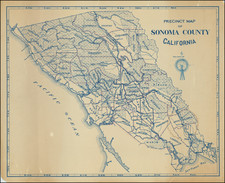An Early Proposal For The Western Tip of Palos Verdes
Rare Early Plan of the Artists Village at Palos Verdes Estates, prepared Charles Henry Cheney (Town Planner) by Hammond Sadler, Landscape Architect, in October 1936.
Oriented with West at the top, the plan proposes the use of the area adjacent to Lunada Bay, Honeymoon Cove, and Christmas Cove as an artists colony. The present Paseo Lunada and Palos Verdes Drive West appear on the map, along with the Grammar School Site, Mirola Plaza and several parks, but the rest appears not to have come to fruition.
In the east, an Arts Plaza and Pio Pico Plaza are surrounded to the west by Craft Shops, a sales gallery, Cafe and Inn and other shops. Further west, the streets, shops and work spaces are reserved for different types of artists and artisans, including:
- Craftsmens Row
- Etchers Lane
- Music Lane
- Drama Lane (with its own Plaza and Theatre)
- Proposed Art School
- Landscape Architects Row
- Architects Row
- Sculptor's Row
- Painter's Row
Other sections are noted for Cottage Hotel, Studios and Houses for Rent, etc.
Charles Henry Cheney
Charles Henry Cheney was born in Rome, Italy, on February 11, 1884, of American parents. He graduated in architecture and engineering from the University of California, Berkeley in 1905. From 1907 to 1910 he studied at the Ecole des Beaux-Arts in Paris. For two years he traveled extensively in Europe, studying city planning in the major cities of France, Italy, Spain, and England. Upon returning to the United States in 1912, he worked in New York for Charles A. Platt, who later became President of the American Academy in Rome.
In 1912 Cheney moved to California's Bay Area and immediately became a public advocate for city planning on the West Coast. He organized a statewide planning conference in Monterey in 1914 and invited civic leaders, chambers of commerce, real estate associations, improvement clubs, architects, and engineers from every city in the state. His draft for the first city planning enabling act in California was passed by the legislature in 1915.
Cheney was a founding member of the American City Planning Institute in 1917. Cheney helped to initiate city planning activities in the State of California by the mid-1910s. Cheney was responsible for organizing the state's first professional planning conference, in Monterey, California, in 1914. Cheney also drafted the first city planning enabling legislation passed by the state legislature the following year. He became an in-demand city planning consultant in the 1920s, producing plans for numerous California cities, including Santa Barbara, Berkeley, Alameda, Monterey, Palo Alto, Long Beach, Riverside, and Fresno. He also created the planned communities of Palos Verdes Estates and Rancho Santa Fe. Through his work with the Cities of Palos Verdes Estates, CA, Santa Barbara, CA, and Rancho Santa Fe, CA, Cheney fine-tuned such regulatory planning concepts as homeowner associations, deed covenants and architectural controls. Cheney also produced city plans for the Fresno, CA (1918), Portland, OR (1919), Spokane, WA (1920), and Riverside, CA (1929), among other cities.
Palos Verdes
In December of 1913, John C. Olmsted was contacted by James Dawson, one of his landscape architects working on the west coast. Dawson related that W. H. Kiernan, a Los Angeles representative of the Palos Verdes Ranch Syndicate, headed by Frank A. Vanderlip Sr. (1864-1937), contacted him about design development for a suburban community on the Palos Verdes Peninsula, land recently purchased by the syndicate. It appears that John C. Olmsted initially took up leadership for developing the project from 1914 until the eve of World War I, when the planning more-or-less ceased. Vanderlip's imagery of Italian hilltop towns with dramatic vistas to the sea and from the surrounding hills was developed by Olmsted Brothers and their involvement in the project continued until 1931, when the Depression slowed land sales and construction. It was the Vanderlip vision and financing, combined with Olmsted Brothers creative, legal, planning, and business talents that saw the project through.
When the Vanderlip Syndicate liquidated the Palos Verdes Ranch holdings after World War I, the property was bought and managed from 1921 to 1923 by Edward G. Lewis, a developer originally from St. Louis. After Lewis' schemes for Trust Indenture Notes met with distrust by the Los Angeles Title Insurance Company, the Palos Verdes project was again under the financial management of Vanderlip who formed a new trust. The future community was called Palos Verdes Estates and had decreased in development area by one-fifth, from the original 16,000 acres to 3225 acres. Eight-hundred acres were set aside for conserving natural parks and beaches and for developing country clubs and other outdoor recreational areas. Vanderlip held onto 13,000 acres in the southern portion of the peninsula for future development. Ninety percent of the development was zoned for single-family residential architecture.
The developmental phase of the project began in earnest about 1921 and construction of major streets and buildings began in 1923. A management team for sales and design was assembled for the project and the headquarters for the general manager Jay Lawyer, and the sales manager Donald K. Lawyer, were located in downtown Los Angeles. At this time Olmsted Brothers became Directors of Design, with Charles H. Cheney (1884-1943), consultant in city planning and Myron H. Hunt (1868-1952), architect. Olmsted's staff had offices in nearby Redondo Beach.
Rarity
The present map is unrecorded.









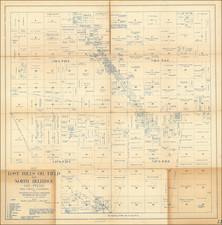
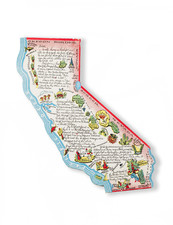
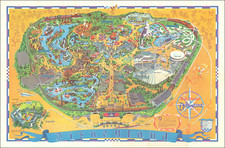
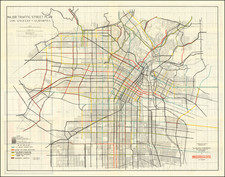
![The Map Plat Book Shows All Real Estate In and Around Pasadena [Map of Pasadena Including Street Index and What to see in Pasadena]](https://storage.googleapis.com/raremaps/img/small/91600.jpg)
